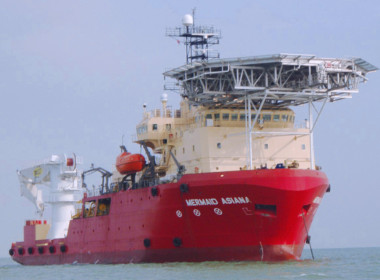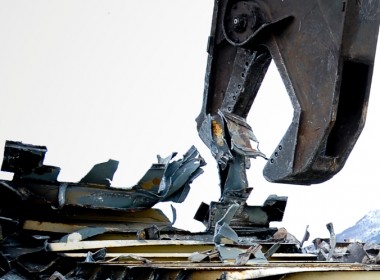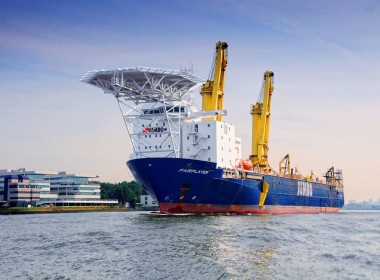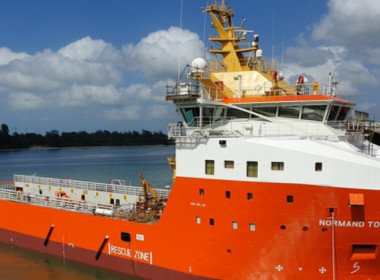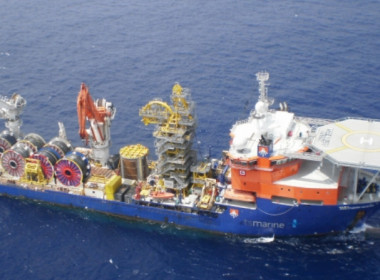COLUMN | Don’t walk away: how Australia and New Zealand got decommissioning wrong – Part One [Offshore Accounts]

New Zealand and Australia are both seen as paragons of good government around the world. They consistently score highly in quality of life surveys, reported corruption is low, and both countries have avoided the thousands of deaths from the Covid pandemic that have blighted the US and Europe. Indeed, Jacinda Ardern’s toothy grin is synonymous with calm, sensible, competent government in the international press coverage of the pandemic, and she was recently re-elected as New Zealand’s prime minister in a landslide victory.
Amateurish Aussie and Kiwi officials
However, the way these countries manage their offshore national resources is an embarrassment: it is amateurish and incompetent. Taxpayers are on the hook for hundreds of millions of dollars of decommissioning costs, whilst large companies like Woodside shrug their shoulders and sidestep their decommissioning obligations.
Profits from successful discoveries are hoovered up by private companies, but losses? When fields are shut in and abandoned, as two recent cases show – the FPSO Umuroa chartered by Tamarind Taranaki on Tui field off New Zealand and FPSO Northern Endeavour owned by Northern Oil and Gas Australia (NOGA) in the Timor Sea – those losses are socialised and picked up by the unlucky taxpayers of Australia and New Zealand.
Whilst the UK and Norway have been successful at compelling offshore operators to decommission their old assets when production ceases, and to make realistic provisions for these expensive end-of-life operations enforced at law, Australia and New Zealand have both been lax, and have let duplicitous operators take over marginal fields with insufficient funds to deal with the cessation of operations.
Free oilfields are not free
The warning signs were evident from the start for both Tamarind Taranaki and Northern Oil and Gas. Woodside did not even sell the Northern Endeavour and the Laminaria-Corallina oil fields to the newly-formed local minnow NOGA in 2015: they simply handed the assets over, along with AU$24 million (US$17.5 million) in cash, which Woodside claimed was sufficient to cover decommissioning.
Now the federal government actually has to decommission the field, it turns out that the bill is in excess of AU$200 million (US$146 million) – and indeed probably closer to AU$300-400 million (US$218-291 million). Indeed, Peter Milne of Boiling Cold has written (here) that “the deal with Northern Oil and Gas Australia (NOGA) allowed Woodside to avoid a decommissioning bill estimated in its 2015 annual report at US$156 million for its 60 per cent share. If that estimate was still valid, the full cost of decommissioning is US$260 million (AU$371 million).”
Woodside’s sustainability shame
Why and how Australian regulators allowed a well-capitalised, multi-billion company like Woodside to give away such a huge liability without any backstop or guarantees is a mystery. When an oilfield changes hands for a negative payment, that is a sign there is probably an enormous liability lurking somewhere.
But Canberra turned a blind eye and Woodside walked away scot free. No surprise to find that Australian Senator Rex Patrick has now labelled the Northern Endeavor becoming the responsibility of the Australian taxpayer as a “major screw up”.
Woodside talks the talk, but walks away
Woodside talks about “corporate social responsibility” and “stakeholder involvement” and “sustainability” (here), but the scandalous case of the Laminaria-Corallina field shows this is pure cant, corporate fibbing on a Trump-like scale. It is hard not to be cynical when Woodside CEO Peter Coleman is taking home more than AU$5 million (US$3.65 million) every year, and the company is boasting: “We are here for the long term. We look after each other, our communities and the environment.”
Woodside stepped away from a liability it estimated at US$260 million and is conspicuously not offering to look after the decommissioning. Indeed, Woodside had the cheek to charge the Australian government AU$8.8 million (US$6.4 million) for advice on how to decommission the field (here). The lack of ethics on display here from Woodside is mind-blowing.
Since Woodside is about to embark on a major FPSO project in Senegal (here), I would counsel the government in Dakar to be very sure that the decommissioning liabilities are properly covered.

Tui Partners run for the door, too
It was a similar story in New Zealand: greed and barefaced cheek from an oil company whilst the industry regulator sat by.
Malaysian-owned Tamarind bought 57.5 per cent of the Tui oil field off New Zealand from AWE for AU$1.5 million (US$1.1 million) in December 2016. In 2017 Tamarind bought the remaining 42.5 per cent interest from New Zealand Oil and Gas (NZOG) and Pan Pacific Petroleum (PPP).
When a majority share of an oilfield is available for less then the price of a bijou beachside bach in the Marlborough Sound, the alarm bells should start ringing. Indeed, the small print showed that these were not sales: they were giveaways, with a back-hander to allow the seller to walk away from the decommissioning liabilities.
Tamarind paid NZ$400,000 (US$275,000) for all of PPP’s shares in the field and on completion of the transaction, PPP paid Tamarind NZ$5.45 million (US$3.75 million) in the form of cash and inventory. The effective date of the transaction was January 1, 2017.
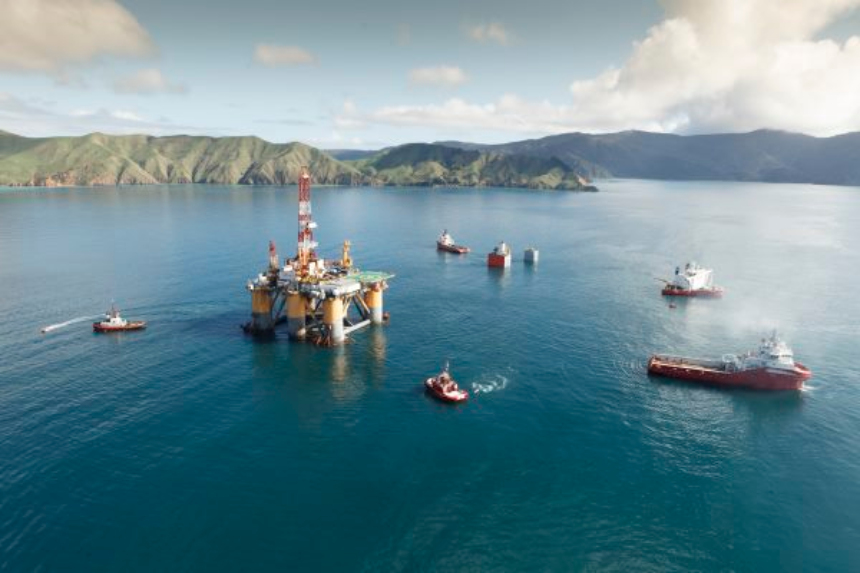
PPP admitted that the current value of the Tui oil field in its books was a big fat zero, and that the company had a restoration provision of NZ$15.5 million (US$10.6 million) on its balance sheet. Tamarind inherited all the benefits and liabilities associated with Tui, including environmental, decommissioning, and abandonment obligations, so PPP was able to write back that provision.
It was the same at NZOG. Tamarind paid the company NZ$750,000 (US$516,000) in exchange for its shareholding in the Tui field and received inventory of NZ$4.7 million (US$3.24 million) of oil plus working capital of NZ$6 million (US$4.13 million), which was also transferred to Tamarind. So, Tamarind paid less than nothing.
Fast forward to 2020: Bankruptcy and bailout
Both countries have now seen these FPSOs abandoned by bankrupt operators, leaving the governments on the hook for the removal of the units for scrap, the plugging of the offshore wells and the removal of the legacy subsea infrastructure. By 2019 Northern Oil and Gas was bust, the AU$24 million (US$17.5 million) was gone and the federal government was on the hook for the full and final cost of the decommissioning.
The industry regulator has taken over the management of the FPSO and committed AU$73.6 million (US$53.7 million) to manning, repairing and managing Northern Endeavor, with Upstream Production Solutions receiving awards worth AU$57.9 million (US$42.2 million) up to the end of this month to operate the vessel.
In December last year, the operator of the Tui Field offshore New Plymouth, Tamarind Resources decided to walk away from the loss-making field and liquidate its Kiwi subsidiary (Tamarind Taranaki) leaving New Zealand taxpayers on the hook.
In Tamarind’s own words (here):
“In early 2017, Tamarind Resources purchased 100 per cent of the Tui area oil field offshore the west coast of the North Island of New Zealand in the Taranaki basin. As operator, Tamarind spent the next 2.5+ years ensuring safe operations and improving oil recovery. While the previous operator was beginning preparations to decommission the field, Tamarind sought to extend the field life through a three-well development program.
“The drilling of the first well did not go as planned. Due to a combination of factors, including the first well being a dry hole and substantial and debilitating time and cost over-runs, the directors elected to suspend the Tui drilling campaign in August 2019. In November 2019, the directors placed Tamarind Taranaki (TTL, the operator of the Joint Venture) into a voluntary administration process to identify a way forward.”
NZ$155m million price tag for the tax payer
Lovely. Heads we win, tails you lose. The New Zealand government estimates (here): “The total cost of the decommissioning work will depend on a number of factors, and MBIE needs to obtain a range of advice from technical specialists to determine this. Until that information has been received it is premature to assess, with any confidence, the costs associated with decommissioning but best estimates available currently assess Tui oil field decommissioning costs at approximately NZ$155 million (US$106.76 million).”
BW Offshore: Hit hard by customer bankruptcy
Meanwhile, the owner of the Umuroa FPSO has been caught in the crossfire (here). Unlike in Australia where NOGA owned Northern Endeavour, Tamarind Taranaki chartered in its FPSO, leaving huge unpaid bills to BW Offshore when it crashed and burned. As BW put it in the press release announcing that it too was walking away from its liabilities and would be liquidating its New Zealand subsidiary:
“The Board of Directors of BW Umuroa (BWU), a wholly owned subsidiary of BW Offshore, has today resolved to place BWU into voluntary liquidation. BWU is the owner and operator of the FPSO Umuroa which is presently located on the Tui oil field offshore New Zealand…”
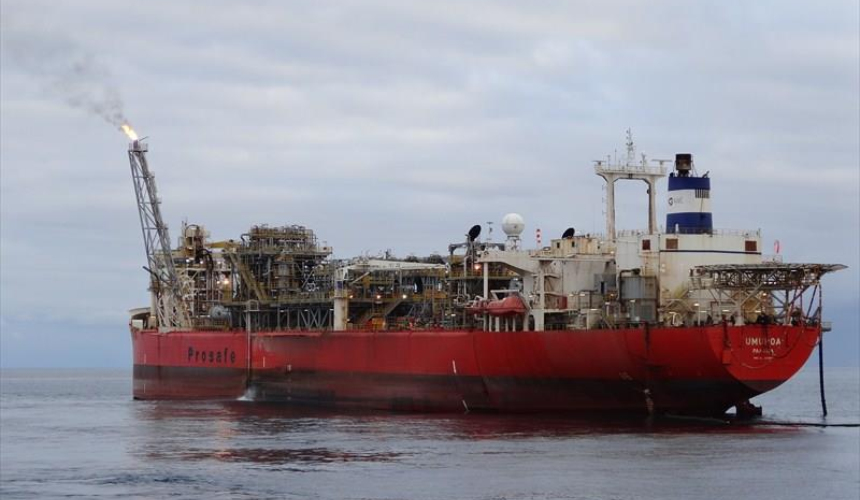
The owners of the Tui field Permit, Tamarind Taranaki (Tamarind), went into insolvency in December 2019, without any funding secured for decommissioning and abandonment liabilities. In March 2020 the New Zealand Government, through the Ministry of Business, Innovation and Employment (MBIE), assumed full responsibility for the decommissioning of the field and for disconnection of the FPSO.
After almost a year of continuous efforts to reach an agreement relating to the disconnection of the FPSO or get cost covered to stay on the field until MBIE is able to execute field decommissioning, the directors and shareholder of BWU have been left with no choice but to place the company into voluntary liquidation in order to prevent further accumulation of unsustainable losses.
Following the liquidation of Tamarind in 2019, BWU has paid in full the expenses involved in maintaining the FPSO on location and in compliance with all regulatory requirements. This has included full remuneration of the local crew and payments to suppliers. BWU will ensure that no contracted party or crew member is left out of pocket as a result of the steps it has been forced to take.
“We have assumed responsibilities far beyond the scope of the contract to ensure the safety and integrity of the vessel, and the protection of the environment, pending an agreement with MBIE to move ahead with the FPSO disconnection”, said Marco Beenen, the CEO of BW Offshore.
MBIE has publicly recognised that BWU is a victim of the insolvency of the field operator Tamarind.
“We have not been able to reach an agreement with MBIE which provides a viable solution despite significant efforts from our side, which includes offering to plan and execute the disconnection for MBIE at cost and without any profit”, said Mr Beenen. “As it now stands, in addition to a significant accumulated cost, we are still incurring more than US$1 million per month to keep the FPSO Umuroa in compliance with regulatory requirements, and this cost is expected to increase as time progresses. This is unsustainable for us as a company.”
BW says it spent more than US$21 million this year just to keep the FPSO on site and in compliance with regulatory requirements during the period, including demobilisation costs for the earlier attempt to disconnect the vessel. Following the termination of the FPSO contract by Tamarind in 2019, and subsequent insolvency, BW Offshore has not received any payments due under the contract for more than 12 months. At the end of the contract (December 31, 2019) there was US$31 million in unpaid invoices which BW had to write off.
Total claims against the New Zealand subsidiary of Tamarind Resources reached nearly US$319.7 million, according to the first report from liquidators, whereas the joint venture had total net assets of only US$22.3 million.
But there is no recourse to Tamarind Resources at a parent company level. It has liquidated the subsidiary and walked away…but continues to operate another onshore field in New Zealand.
Tamarind flourishes
Tamarind Resources said in late 2019 that the rest of the company – including Tamarind New Zealand Onshore Operations, Tamarind’s 56 per cent share in the Galoc oilfield in the Philippines and Tamarind’s various interests in Australia – “retain the continued support of OCP as the group’s key lender” and were “unaffected by the Tui situation.”
That’s nice: pay the CEO Wai Lid Wong a big bonus for his prudence in abandoning the FPSO and the field for the New Zealand taxpayers to sort out.

Tamarind’s taking the…
Then, earlier this month Taramrind made a move which can only be described as “taking the piss”: the company bought another FPSO for the Galoc field in the Philippines. Tamarind has bought the Rubicon Intrepid from Rubicon Offshore in Singapore and is leasing the FPSO back to the owners of the Galoc oilfield “on terms that are mutually beneficial to both parties and, most importantly, enable the Galoc JV to continue production and the economic life of the Galoc field”, said Tamarind, which is the 55.88 per cent shareholder and operator of the field.
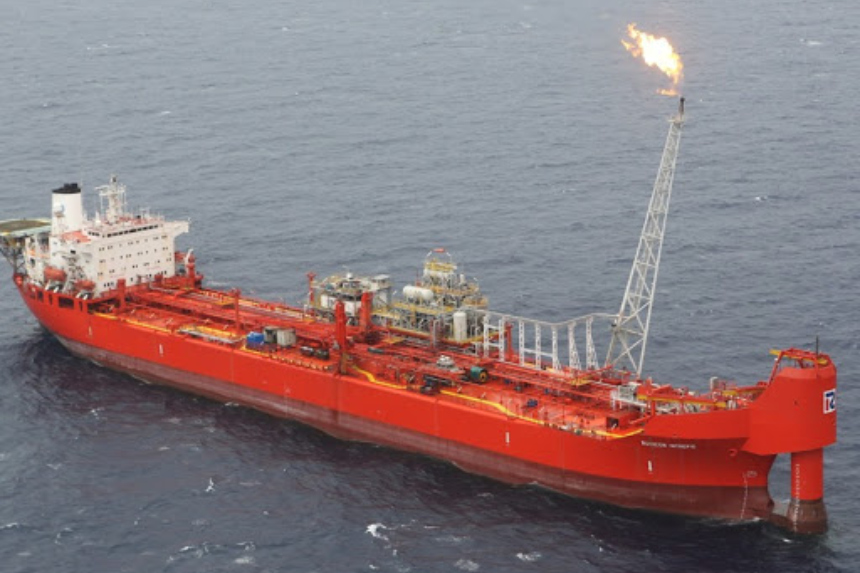
The field has been in production since 2008 and has produced about twenty million barrels of oil. Like Tui and Laminaria-Corallina, Galoc is approaching the end of its life.
Tamarind said (here) that its strategy of improving performance from “under-exploited fields via operational excellence is now even more critical given the continued volatility and downturn in world oil prices.”
Unfortunately, the evidence from New Zealand suggests that Tamarind’s claim to “operational excellence” is BS and the taxpayers of the Philippines should be very, very wary.
Who is going to be on the hook when the Galoc field ceases to produce and the money runs out? Have Tamarind and its roll call of small partners put aside sufficient funds for the decommissioning? Can the government in Manila compel them to? Does the government have recourse to the shareholding partners in Galoc, or are the liabilities neatly “ring-fenced” as they were in Tui?
But it is not just Tamarind and Woodside of whom governments should be cautious. The problem of decommissioning is systemic, and can only be tackled by national legislation, such as happened in the UK and Norway. The British government actually publishes a detailed annual report (here) on decommissioning, and notes that £1.5 billion (US$1.98 billion) was spent on it in the UK North Sea in 2019.
Third time unlucky for Triangle?
Indeed, a second operator, Triangle Energy, is now in jeopardy in Australia. Triangle faces the shut-in of its only asset (Cliff Head field off Perth, Western Australia) after the BP refinery at Kwinana, which buys Triangle’s one thousand barrels a day of crude production, announced it was closing in April 2021 (here). That threatens to push Triangle into insolvency next year, unless a new buyer for its oil can be found.
If Triangle goes bust, it has an AU$37 million (US$27 million) provision on its books for the removal of the Cliff Head platform, plug and abandonment of the offshore wells, and the closure of the onshore Arrowsmith processing plant. Unfortunately, anyone who has costed a large heavy lift ship to cut and lift a platform will tell you that AU$37 million doesn’t go very far, especially when the structure you need to remove is over 3,800 kilometres from Singapore, from whence such a ship would have to mobilise.
As Lonnie Gordon put it, it’s happening all over again (here).
Has anyone paid a price, except the unlucky taxpayers? Who was the Federal Resources Minister in the Australian government at the time of the NOGA purchase from Woodside? It was the current Australian Treasurer Josh Frydenberg.
We’ll look at the specifics of what went wrong on Tui and Laminaria-Corallina in a later piece.
Background reading
Peter Milne at Boiling Cold has excellent in depth coverage of the Northern Endeavour fiasco here and here.
Greenpeace New Zealand’s slightly sensational coverage of the Umurao is here.
See local press coverage of the efforts to halt the sale of another New Zealand field here over fears that the buyers may not fulfil their decommissioning obligations
The New Plymouth mayor’s solution to manage the risks is covered here.


